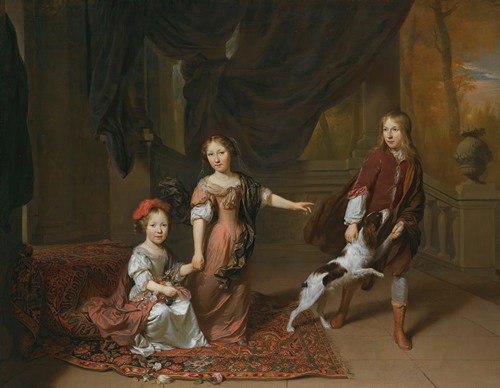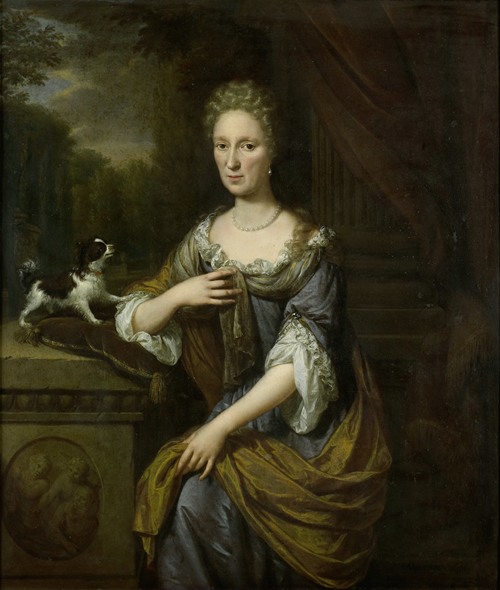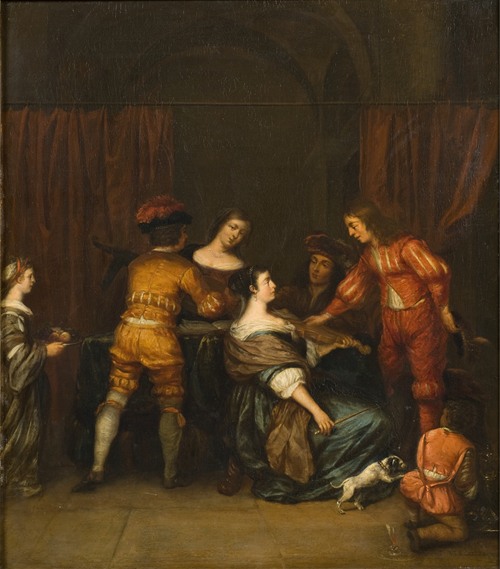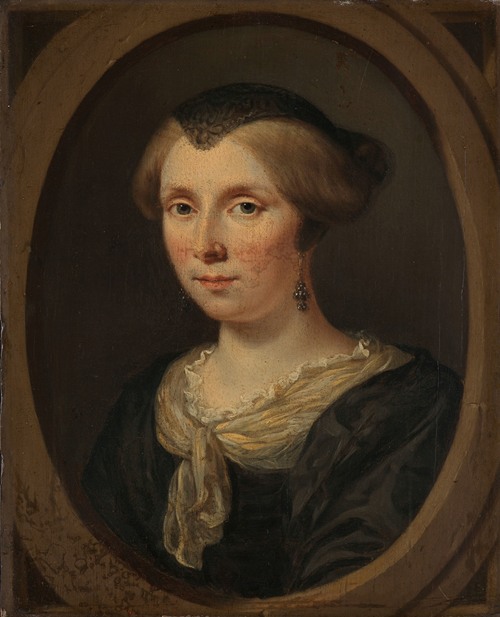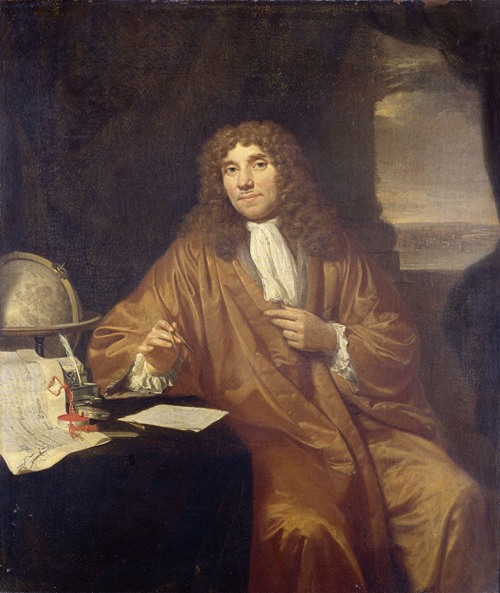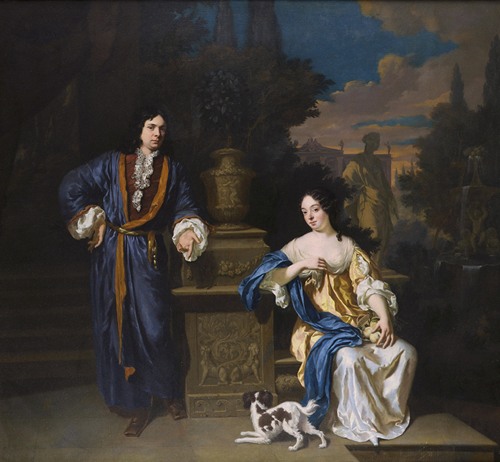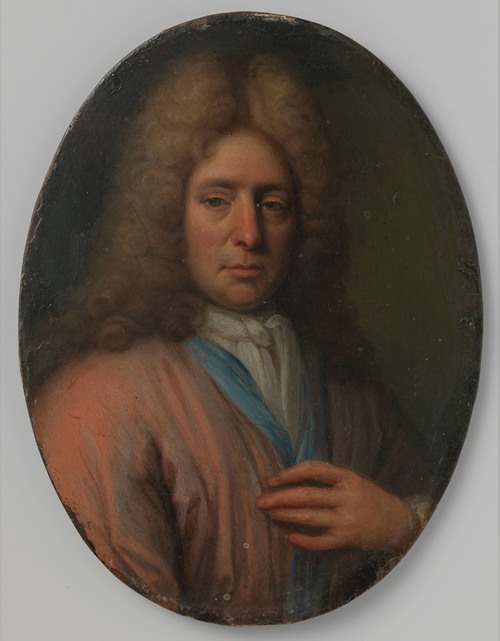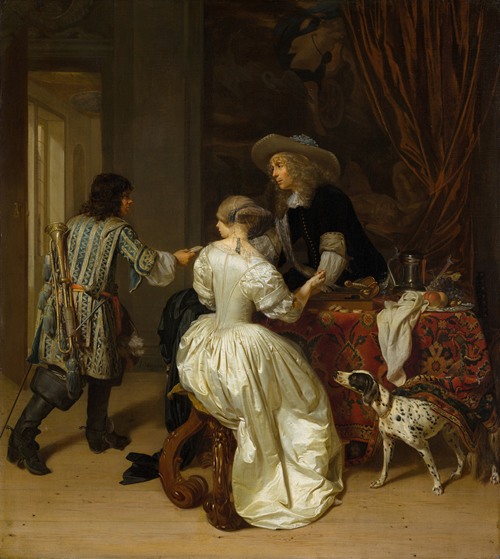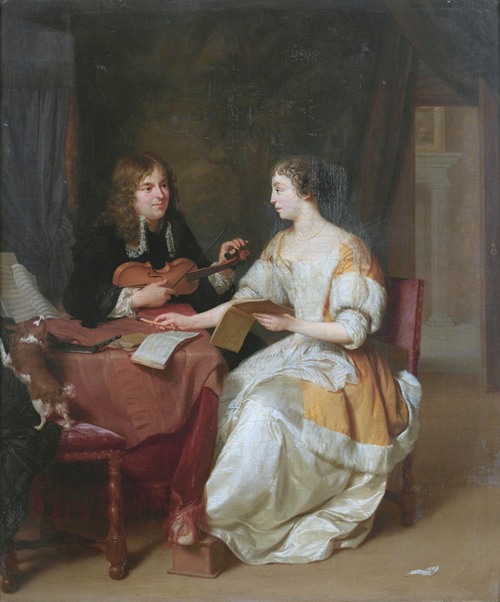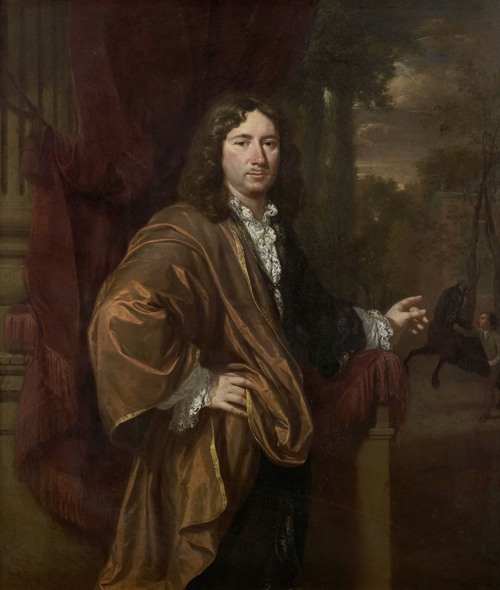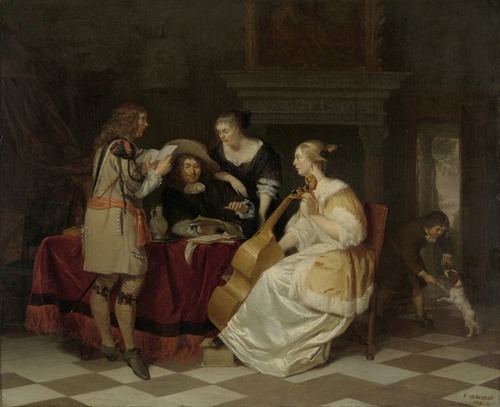

Jan Verkolje or Johannes Verkolje was a Dutch painter, draughtsman and engraver. He is mainly known for his portraits and genre pieces of elegant couples in interiors and, to a lesser extent, for his religious and mythological compositions. He was a gifted mezzotint artist. Trained in Amsterdam Verkolje spent his active professional career in Delft where he had access to powerful patrons.
Verkolje was the son of Benjamin Jacobsz, a locksmith, and Maria Tonnes. He was baptized in the Nieuwezijds Kapel in Amsterdam on 9 February 1659.
The early artist biographer Arnold Houbraken recounts that Verkolje was a child prodigy, who became a self-taught artist after hurting himself while playing with darts as a child. As the injury on his heel or ankle did not heal well he was bedridden for years. To while away the time, he started to copy prints. The artist Jan Gerritsz van Bronckhorst gave him high-quality prints to copy. Thus started his artistic career according to Houbraken. Subsequently Jan studied for about half a year with Jan Andrea Lievens (1644–1680), the son of the prominent painter Jan Lievens.
In 1672, the so-called rampjaar (disaster year), which was marked by a large-scale invasion of the Dutch Republic by French and other armies, Verkolje moved from Amsterdam to Delft. Here he married Judith Voorheul in October 1672. He became a member of the Guild of St. Luke of Delft in 1673 and served as its dean between 1678 and 1688. Verkolje was very successful and enjoyed the patronage of important patrons in Delft as well as the court in the Hague. As a portrait painter his only competitor in Delft was Cornelis de Man.
His sons Nikolaas Verkolje (Delft, 1673 – Amsterdam, 1746) and Jan II (Delft, 1683 – Amsterdam, 1755) were trained by Verkolje as painters. Nikolaas had a successful career. Verkolje's other pupils included Albertus van der Burch, Joan van der Spriet, Willem Verschuring, and Thomas van der Wilt. In addition to these pupils, Houbraken also mentions Henrik Steenwinkel.
Verkolje died in Delft in 1693 aged 43 when he was at the peak of his fame. He was buried in the Oude Kerk (Delft). He left a wife, three sons and two daughters.
